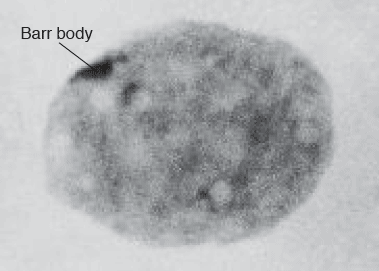A Recipe to Make Girls
If I were to ask you, genetically speaking what is the difference between a boy and a girl? You are likely to say “A girl carries two X chromosomes, while a boy carries one X and one Y”.
If I where then to ask you how that determines ones sex, you might postulate that the Y chromosome contains some special genes which magically builds a male. While perhaps to build a female you need double the amount of X genes to make a female.
While this seems a reasonable assumption, it only proves to be partially correct. At least in humans it seems that the presence or absence of the Y is particularly important in kicking of development of a boy or a girl. However the number of X chromosomes is not of any particular relevance.
How is this possible? Surly girls have twice as much expression of X linked genes than boys? The answer is the X has its dosage compensated for. Lets explore what this means.
Girls only use one of their X Chromosomes
As we know a boy has 1 X and 1 Y chromosome, while a girl possesses 2 X chromosomes. The double dose of X chromosomes in girls is only relivant very early in the development of a female embryo.
If it wasn’t for the mechanism known as Dosage Compensation any gene coded on an X chromosome would be expressed at double the required level, which can be lethal. Dosage compensation is a genetic regulatory mechanism which operates to neutralize unequal expression of genes on the X chromosome. What this achieves is a roughly equal level of expression of X linked genes in both boys and girls, preventing potentially lethal double dosing of X linked genes.
Compared to the desolate Y chromosome, the X chromosome is a sprawling metropolis of genetic information.There are are over 1000 genes on the X chromosome which play critical roles in development. Genes related to intelligence, blood clotting and muscle development are all found here. So you can see that if girls had double the amount of X genes compared to boys, some potentially lethal situations could easily arise.
In humans, females achieve dosage compensation by down regulating the expression of genes on one X chromosome. Essentially this means turning off the expression of the extra X chromosome. Thus bringing expression levels of genes on the X chromosome down to similar levels found in males.
The process of turning off an X chromosome is known as X Inactivation and it results in a large genetically inactive X chromosome, known as a Barr body. Actually not all portions of the second X chromosome become inactive, a very small percentage of genes remain active, though for the purposes of this post I will not be discussing this.
When chromosomes become inactive they appear as dark dense patches in the nucleus of a cell. You can see the Barr Body here – an inactive X chromosome.

I will refrain from the deep dive into the mechanics of why inactive chromosomes appear as dense dark patches, but it is enough to say that rather than being an open and free stretch of DNA the inactive chromosome condenses down to the point where the gene expression proteins are unable to bind to the DNA to read it, there is physically not enough room for the ‘machinery’ to enter.
If you are interested, here is an awesome animation with narration explaining at a high level how the X chromosome gets inactivated by preventing the gene expression machinery from reading its DNA.
How does the extra X chromosome get ‘turned off’? There are set of genes which are found on the X chromosome. This area is known as Xic or the ‘X Inactivation Center’. Inside Xic there is a counting duo, two genes Xist and Tsix who have the jobs of kicking off the inactivation of one randomly selected X chromosome.

Both Xist and Tsix produce non coding RNA transcripts. The Tsix RNA transcript is anti sense to the Xist and therefore can bind to the Xist sequence and thus inhibit its action. Before an X chromosome is inactivated both chromosomes will express Xist in low concentrations. Shortly after this one X chromosome will begin to express Tsix in high levels. Because Txis is an inhibitor of Xist expression what follows is a dramatic reduction the concentration of Xist in the area around this X chromosome. This chromosome will become the active X chromosome.
Meanwhile on the second X chromosome the expression of Xist is increased dramatically. The Xist transcript,then binds all the way along the X Chromosome it is expressed from, acting to recruit proteins involved in deactivating genes. The net result here is a Barr Body – an inactive X chromosome.
So we can see that even though girls carry twice the number of X Chromosomes than boys, the second X is only really required early on in sex differentiation, and is not required for normal cell activities. The X Chromosome encodes a lot of genes critical in both ongoing cellular activities and in early development, but double the expression of X linked genes is not required and in fact would be lethal during day to day cellular activity.
The expression of the sex genes is a fascinating topic. So i hope this gave some insight into the goings on of the X chromosome – and a little bit about how girls are made. I’ll try get out a follow up too ‘A Recipe To Make Boys’